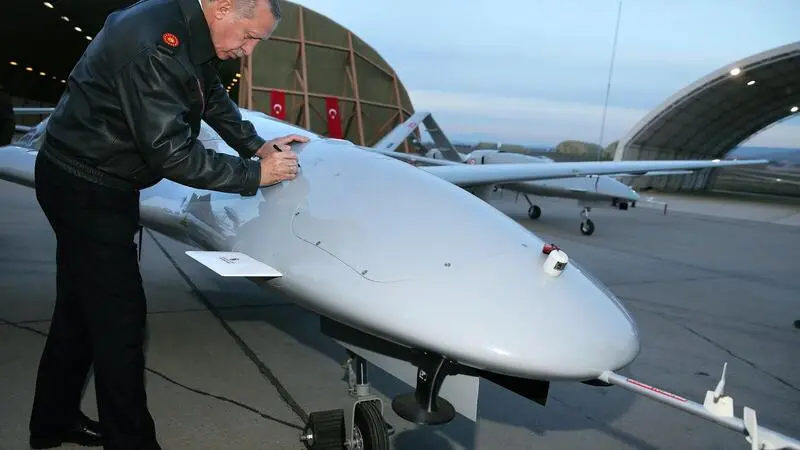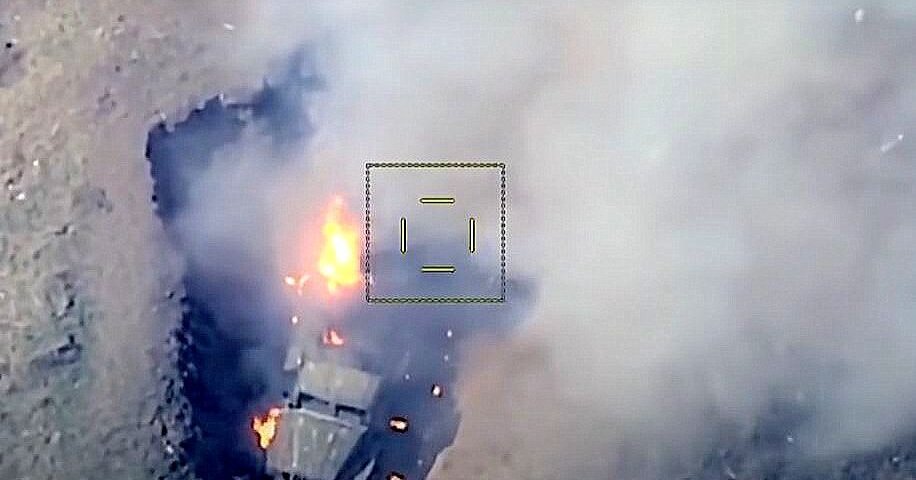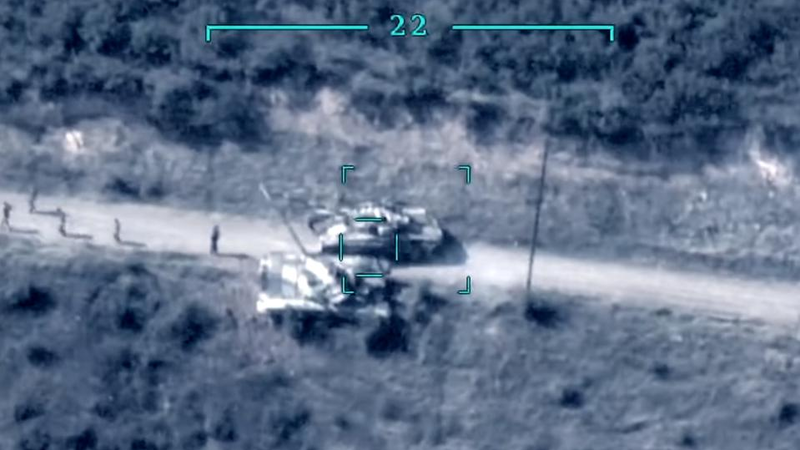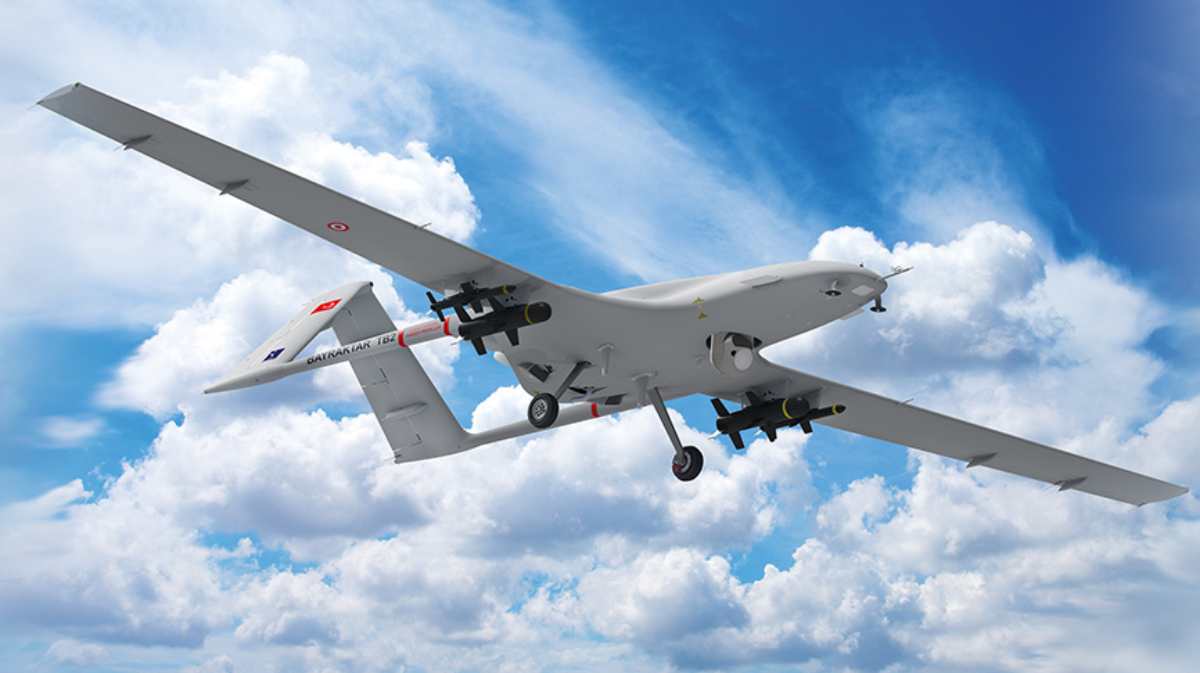Cap Vinícius Martins do Vale
The Nagorno-Karabakh conflict
During October and November 2020, the mountainous region called Nagorno-Karabakh, situated in the South Caucasus, was the scene of a conflict between Azerbaijan and Armenia, the two countries through which the enclave stretches. The two former Soviet republics had already fought bloody conflicts over the sovereignty of the region shortly after the dissolution of the Soviet Union.
Armenia, after the clashes in the 1990s, gained an advantageous position with regard to territorial dominance in the region, holding it until the recent conflict with Azerbaijan. Although both countries extol their supposed conquests in the fighting, the territorial advantages acquired by Azerbaijan, in addition to the military superiority obtained in the dispute, are notorious.

One of the main factors contributing to Azerbaijan’s military superiority in the fighting was the use of advanced military technology, specifically the use of the Remotely Piloted Aircraft System (RPAS). The Azerbaijani Armed Forces were able to exploit the numerous possibilities in the use of RPAS, especially in reconnaissance and attack roles.
Azerbaijan’s efficient employment of RPAS is, however, mainly credited to Turkey’s support of Azerbaijan in the conflict, as the equipment and tactics employed have been improved recently during the Turkish involvement in the Libyan and Syrian conflicts.
The evolution of RPAS employment in Turkey

The milestone of modern employment of RPAS in combat was its use by the United States of America (USA) in 2001 in the context of the War on Terror doctrine. Since then, the use of RPAS in combat has evolved rapidly, with other countries developing their own systems.
Turkey, in the early 2000s, saw the need to employ RPAS on its own territory in order to suppress Kurdish armed movements that were and still are fighting for the secession of part of Kurdish-majority territory and the creation of a sovereign Kurdish country.
Initially, the Turks relied on the use of foreign systems, mainly from the US and Israel. This reliance on foreign hardware became problematic when the U.S., due to diplomatic clashes with Turkey, vetoed the sale of various military hardware to Turkey. In addition, Turkish authorities began to accuse Israel of obtaining intelligence data through the RPAS manufactured and sold by Israel and operated, in part, by Israeli technicians.
In order to overcome these obstacles, the Turkish Armed Forces leadership decided to allocate resources for the indigenous development of RPAS capable of meeting their needs. Turkish engineer Selçuk Bayraktar, who gained advanced knowledge about RPAS from his studies at the renowned American Massachusetts Institute of Technology (MIT), seized this opportunity and presented to the military authorities the RPAS developed by his family’s automotive components firm, Baykar, based on his expertise.
Bayraktar was thus able to win RPAS development contracts with the Turkish Armed Forces. The Turkish governmental leadership gave high priority to RPAS production programs to fight Kurdish terrorism, and Bayraktar’s relationship with high-ranking Turkish officials intensified. Bayraktar even married the daughter of Turkish President Recep Tayyip Erdoğan. His firm is responsible for the development of the SARP TB2, the backbone of the Turkish SARPs, which are composed of several types of aircraft.
With the success in developing the indigenous systems, Turkey began to employ its RPAS as a power projection tool. The use of its systems became notorious for their efficiency, especially in the conflicts in Syria and Libya, and for their low cost, compared to the RPAS developed and made available by the main military powers. Its successful use in the Nagorno-Karabakh conflict in favor of Azerbaijan confirmed its excellence.
The employment of RPAS in the Nagorno-Karabakh conflict

The functions performed by RPAS in the conflict were diverse, with the most prominent being those focused on reconnaissance and attack.
Azerbaijan adapted old Soviet aircraft to be remotely controlled and employed them early in the conflict. These aircraft flew over the perimeter hit by Armenian antiaircraft fire in order to activate their antiaircraft defenses, which, after initiating fire, were identified and later neutralized by attacking RPAS.
With the weakening of the Armenian anti-aircraft defenses, the use of RPAS was facilitated in the conflict region. Initially, they performed reconnaissance missions of Armenian defense lines and offset targets. Once the targets were obtained, attack missions were carried out on them, neutralizing high-value military-use materials such as armor, artillery and anti-aircraft defense systems, opening breaches in the defense lines and allowing the infiltration of small Azerbaijani detachments.
The employment of small highly mobile fractions with air support was one of the tactics employed by North Atlantic Treaty Organization (NATO) forces in Afghanistan. This mode of operation has the advantage of reduced logistical maneuverability and was assimilated by Turkey as a member state of the alliance that was active in the invasion of Afghanistan. By employing its forces and relying on RPAS as air fire support, the great Turkish influence on Azerbaijan’s military actions is evident.
In addition to Turkish RPAS, Israeli-developed vehicles were used, showing the diversification of Azerbaijan’s weapon systems, while Armenia had almost all its weapon systems from the former Soviet Union or the Russian Federation. The Israeli RPAS employed were mainly so-called “Loitering Munition”, RPAS that self-destruct (kamikase) in order to neutralize or cause damage to their target.
Employing RPAS imagery, the Azerbaijani government and Armed Forces broadcast videos of the attacks on Armenian troops and military material daily on social media and television. The quantity and quality of Armenian material destroyed by RPAS, in addition to its monetary value, were also publicized by the authorities in order to garner popular support for the fighting.
The efficient employment of RPAS contributed greatly to, besides the kinetic effort of the maneuver, the development of Information Operations (Op Info) aimed at dissuasion and mobilization of national support.


Prospects for employing RPAS in combat
Several military analysts exposed the lessons learned from the employment of RPAS in the conflict and the trends in the employment of these systems in future combat.
One of the aspects raised is the limited effectiveness of conventional anti-aircraft defense systems against RPAS. Armenia has largely deployed old anti-aircraft defense systems, many already obsolete, but also a small amount of more modern equipment. None of these systems demonstrated effectiveness in defending airspace against RPAS during the conflict. The systems, designed to target conventional aircraft, are of little effectiveness when employed against RPAS.
An important trend pointed out by analysts is the use of Artificial Intelligence for the Command and Control of RPAS. In this way, the aircraft would act autonomously, with no need for satellite communications or through bases with radio command and control systems. This advance would reduce their vulnerability to the use of Electronic Warfare (EG).
RPAS have thus become an efficient and cost-effective means of obtaining aerial firepower. By employing these systems, developing nations can make up for the lack of a high-cost Air Force by achieving interoperability with land and naval forces that would greatly enhance their combat capability.

About the author:
Cap Vinícius Martins do Vale – Vale The author is a Cavalry officer graduated from the Academia Militar das Agulhas Negras (AMAN) in the year 2007. He took the Psychological Operations Course (Op Psc) in 2014 and attended the Officer Training School (EsAO) in 2017. He obtained a master’s degree from EsAO through research on the Information Operations employed by the Russian Federation in the annexation of Crimea in 2014. He currently serves in the 1st Psychological Operations Battalion and is head of the Psychological Operations Center.
*** Translated by DEFCONPress Team ***
